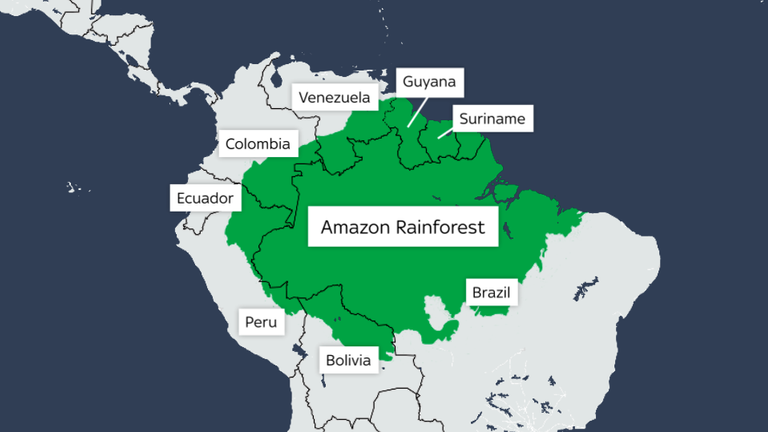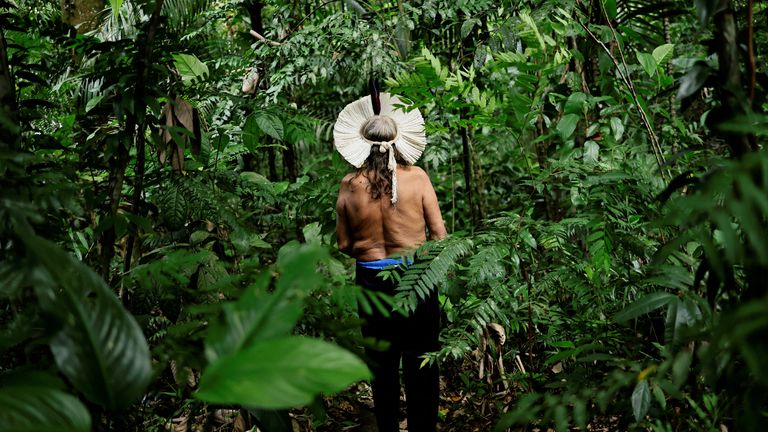It’s twice the size of India, spread across eight countries, a territory, and home to over 16,000 tree species – the Amazon rainforest is one of the most biodiverse places on the planet.
Today, leaders and representatives of the eight countries it spans will meet for the first time in 14 years hoping to reach an agreement on plans to protect it from threats like deforestation and crime.
Here we explain why it’s so important to protect the world’s largest rainforest, the threats it currently faces and what we’re expecting from the meeting.
Brazil covers two-thirds of the Amazon, but it also sprawls across Bolivia, Peru, Ecuador, Colombia, Venezuela, Guyana, Suriname and the territory of French Guiana.
Colonised and exploited – how govts have viewed Amazon
It contains one in 10 known species on Earth, according to the World Wildlife Fund, has about 20% of the world’s freshwater reserves and thousands of tree species which help create and sustain the ecosystem.
Alongside its contribution to biodiversity and serving as a home to millions of people, it is also a crucial carbon sink for the climate, playing a vital role in absorbing carbon dioxide.
Protecting it is vital to reducing the impact of climate change because of the vast amount of climate-warming greenhouse gas it absorbs.
But governments have historically viewed it as an area to be colonised and exploited, with little regard for sustainability or the rights of its Indigenous peoples.
Deforestation and the politics
The main environmental threat to the Amazon is deforestation and politics plays into it.
The biome has lost more than 85 million hectares (211 million acres), or about 13% of its original area, according to the Monitoring of the Andean Amazon Pact.
Most of that destruction has come in the past half-century and Brazil has been the main culprit. Cattle ranching and soybean crops have expanded dramatically due to new technology and the global demand for grain and beef.
Forty-one per cent of deforestation in Brazil’s Amazon has come in Para state, where so much land has been converted to run some 27 million cattle that it’s the leading emitter of greenhouse gases among Brazilian states, according to Climate Observatory, a network of environmental non-profit groups.
Brazil’s controversial former president Jair Bolsonaro, who led the country between 2019-2022, weakened Brazil’s environmental enforcement agency and urged more commercial farming and mining in the rainforest, claiming it would help fight poverty.
An area of forest larger than the US state of Maryland was destroyed during the first three years of his presidency.
But tackling deforestation was central to Brazilian president Luiz Inacio Lula da Silva’s election campaign last year. He pledged to stop all Amazon destruction and preliminary government data suggests his methods might be working.
Deforestation in Brazil’s Amazon fell 68% in April from the previous year, preliminary government data showed in



